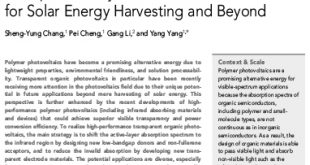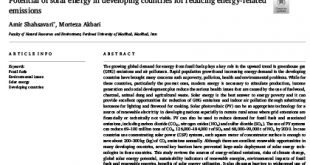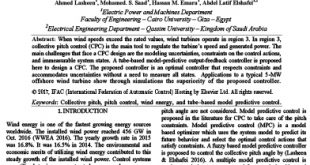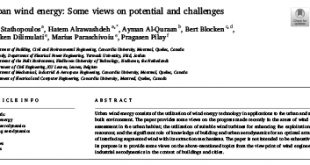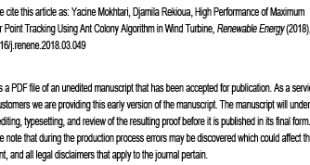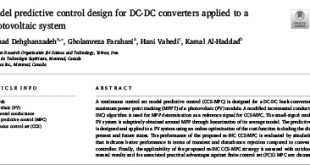Harvesting energy from the sun is attracting increasing attention due to the challenges arising from our continued dependence on fossil fuels. In the past two decades. polymer photovoltaics (PV) based on bulk-heterojunction (BHJ) structure have become a promising alternative energy option due to their lightweight properties. environmental friendliness. and solution …
Read More »Solar energy radiation measurement with a low–power solar energy harvester
Solar energy radiation is essential in plant physiology and pathophysiology hence its knowledge is fundamental for example. to estimate evapotranspiration (Gocić et al.. 2015. Petković et al.. 2015) and to predict infection risk of some fungus diseases (Katsantonis et al.. 2017. Dalla Marta et al.. 2008) that are needed to …
Read More »Potential of solar energy in developing countries for reducing energy-related emissions
The role of energy is vital to human well-being and it is also crucial for economic development and energy fosters economic growth. Access to sufficient energy resources is a serious global concern. particularly in developing countries that do not have access to a secure supply of energy. Worldwide primary energy …
Read More »Robust design and optimization procedure for piled-raft foundation to support tall wind turbine in clay and sand
Wind energy. an alternative to conventional energy produced by burning fossil fuels. is a renewable and clean energy which produces no greenhouse gas emissions during operation. consumes no water. and uses only a little land. With the rapidly growing world population. it is essential to increase the production of energy …
Read More »Clean Energy Installations could Provide 1TW more Power by 2023
Renewable growth will be largely driven by China. which is predicted to be responsible for 41% of expansion.
Read More »Durability and Reliability of Polymers and Other Materials in Photovoltaic Modules (Plastics Design Library)
Durability and Reliability of Polymers and Other Materials in Photovoltaic Modules describes the durability and reliability behavior of polymers used in Si-photovoltaic modules and systems. particularly in terms of physical aging and degradation process mechanisms. characterization methods. accelerated exposure chamber and testing. module level testing. and service life prediction. The …
Read More »Wind energy research in Mexico
The increase of the demand and consumption of energy resulting from technological progress and from advancement in human development are seen as the most important factors in the acceleration of climate and environmental changes observed and described by the scientific community. Energy is fundamental because is one of the most …
Read More »Urban wind energy: Some views on potential and challenges
Wind has been used as an energy source since ages. The power of wind was used to sail ships. to mill grain and to pump water. Wind power is currently considered as one of the most viable alternatives to fossil fuels because it is renewable. widely distributed and clean with …
Read More »High performance of Maximum Power Point Tracking Using Ant Colony algorithm in wind turbine
During the last decade. renewable energies have taken on a great importance in the development of some countries. Developing this energy is increasingly the axis explored by the scientific community. The energy can be extracted from many sources. to cite fossil. solar and wind.Wind turbine technology has developed rapidly in …
Read More »Model predictive control design for DC-DC converters applied to a photovoltaic system
Despite the reduction of solar installation cost by a ratio of 10 during the last 20 years. still conversion efficiency of PV panels remains an important parameter to take into account when designing solar system for residential applications. Therefore. an efficient MPPT algorithm plays a key role to harvest optimum …
Read More » Iran Energy News Oil, Gas, Petrochemical and Energy Field Specialized Channel
Iran Energy News Oil, Gas, Petrochemical and Energy Field Specialized Channel
